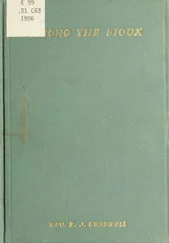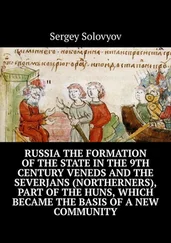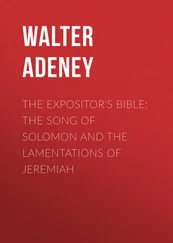Charles Addison - The History of the Knights Templars, the Temple Church, and the Temple
Здесь есть возможность читать онлайн «Charles Addison - The History of the Knights Templars, the Temple Church, and the Temple» — ознакомительный отрывок электронной книги совершенно бесплатно, а после прочтения отрывка купить полную версию. В некоторых случаях можно слушать аудио, скачать через торрент в формате fb2 и присутствует краткое содержание. Жанр: foreign_antique, foreign_prose, на английском языке. Описание произведения, (предисловие) а так же отзывы посетителей доступны на портале библиотеки ЛибКат.
- Название:The History of the Knights Templars, the Temple Church, and the Temple
- Автор:
- Жанр:
- Год:неизвестен
- ISBN:нет данных
- Рейтинг книги:5 / 5. Голосов: 1
-
Избранное:Добавить в избранное
- Отзывы:
-
Ваша оценка:
- 100
- 1
- 2
- 3
- 4
- 5
The History of the Knights Templars, the Temple Church, and the Temple: краткое содержание, описание и аннотация
Предлагаем к чтению аннотацию, описание, краткое содержание или предисловие (зависит от того, что написал сам автор книги «The History of the Knights Templars, the Temple Church, and the Temple»). Если вы не нашли необходимую информацию о книге — напишите в комментариях, мы постараемся отыскать её.
The History of the Knights Templars, the Temple Church, and the Temple — читать онлайн ознакомительный отрывок
Ниже представлен текст книги, разбитый по страницам. Система сохранения места последней прочитанной страницы, позволяет с удобством читать онлайн бесплатно книгу «The History of the Knights Templars, the Temple Church, and the Temple», без необходимости каждый раз заново искать на чём Вы остановились. Поставьте закладку, и сможете в любой момент перейти на страницу, на которой закончили чтение.
Интервал:
Закладка:
Several bishops from Palestine were present at this council, together with the archbishop of Cæsarea, and William archbishop of Tyre, the great historian of the Latin kingdom.
The order of the Temple was at this period divided into the three great classes of knights, priests, and serving brethren, all bound together by their vow of obedience to the Master of the Temple at Jerusalem, the chief of the entire fraternity. Every candidate for admission into the first class must have received the honour of knighthood in due form, according to the laws of chivalry, before he could be admitted to the vows; and as no person of low degree could be advanced to the honours of knighthood, the brethren of the first class, i. e. the Knights Templars, were all men of noble birth and of high courage. Previous to the council of Troyes, the order consisted of knights only, but the rule framed by the holy fathers enjoins the admission of esquires and retainers to the vows, in the following terms.
“LXI. We have known many out of divers provinces, as well retainers as esquires, fervently desiring for the salvation of their souls to be admitted for life into our house. It is expedient, therefore, that you admit them to the vows, lest perchance the old enemy should suggest something to them whilst in God’s service by stealth or unbecomingly, and should suddenly drive them from the right path.” Hence arose the great class of serving brethren, ( fratres servientes ,) who attended the knights into the field both on foot and on horseback, and added vastly to the power and military reputation of the order. The serving brethren were armed with bows, bills, and swords; it was their duty to be always near the person of the knight, to supply him with fresh weapons or a fresh horse in case of need, and to render him every succour in the affray. The esquires of the knights were generally serving brethren of the order, but the services of secular persons might be accepted.
The order of the Temple always had in its pay a large number of retainers, and of mercenary troops, both cavalry and infantry, which were officered by the knights. These were clothed in black or brown garments, that they might, in obedience to the rule, 82 82 Regula, cap. 20.
be plainly distinguished from the professed soldiers of Christ, who were habited in white. The black or brown garment was directed to be worn by all connected with the Templars who had not been admitted to the vows, that the holy soldiers might not suffer, in character or reputation, from the irregularities of secular men their dependents. 83 83 Cap. 21, 22.
The white mantle of the Templars was a regular monastic habit, having the red cross on the left breast; it was worn over armour of chain mail, and could be looped up so as to leave the sword-arm at full liberty. On his head the Templar wore a white linen coif, and over that a small round cap made of red cloth. When in the field, an iron scull-cap was probably added. We must now take a glance at the military organization of the order of the Temple, and of the chief officers of the society.
Next in power and authority to the Master stood the Marshal, who was charged with the execution of the military arrangements on the field of battle. He was second in command, and in case of the death of the Master, the government of the order devolved upon him until the new superior was elected. It was his duty to provide arms, tents, horses, and mules, and all the necessary appendages of war.
The Prior or Preceptor of the kingdom of Jerusalem, also styled “Grand Preceptor of the Temple,” had the immediate superintendence over the chief house of the order in the holy city. He was the treasurer general of the society, and had charge of all the receipts and expenditure. During the absence of the Master from Jerusalem, the entire government of the Temple devolved upon him.
The Draper was charged with the clothing department, and had to distribute garments “free from the suspicion of arrogance and superfluity” to all the brethren. He is directed to take especial care that the habits be “neither too long nor too short, but properly measured for the wearer, with equal measure, and with brotherly regard, that the eye of the whisperer or the accuser may not presume to notice anything.” 84 84 Cap. 20, 27, of the rule.
The Standard Bearer ( Balcanifer ) bore the glorious Beauseant , or war-banner, to the field; he was supported by a certain number of knights and esquires, who were sworn to protect the colours of the order, and never to let them fall into the hands of the enemy.
The Turcopilar was the commander of a body of light horse called Turcopoles ( Turcopuli .) These were natives of Syria and Palestine, the offspring frequently of Turkish mothers and christian fathers, brought up in the religion of Christ, and retained in the pay of the order of the Temple. They were lightly armed, were clothed in the Asiatic style, and being inured to the climate, and well acquainted with the country, and with the Mussulman mode of warfare, they were found extremely serviceable as light cavalry and skirmishers, and were always attached to the war-battalions of the Templars.
The Guardian of the Chapel ( Custos Capellæ ) had charge of the portable chapel and the ornaments of the altar, which were always carried by the Templars into the field. This portable chapel was a round tent, which was pitched in the centre of the camp; the quarters of the brethren were disposed around it, so that they might, in the readiest and most convenient manner, participate in the divine offices, and fulfil the religious duties of their profession.
Besides the Grand Preceptor of the kingdom of Jerusalem, there were the Grand Preceptors of Antioch and Tripoli, and the Priors or Preceptors of the different houses of the Temple in Syria and in Palestine, all of whom commanded in the field, and had various military duties to perform under the eye of the Master.
The Templars and the Hospitallers were the constituted guardians of the true cross when it was brought forth from its sacred repository in the church of the Resurrection to be placed at the head of the christian army. The Templars marched on the right of the sacred emblem, and the Hospitallers on the left; and the same position was taken up by the two orders in the line of battle. 85 85 Jac. de Vitr. Hist. Orient. apud Martene thesaur. nov. anecdot. tom. iii. col. 276, 277.
An eye-witness of the conduct of the Templars in the field tells us that they were always foremost in the fight and the last in the retreat; that they proceeded to battle with the greatest order, silence, and circumspection, and carefully attended to the commands of their Master. When the signal to engage had been given by their chief, and the trumpets of the order sounded to the charge, “then,” says he, “they humbly sing the psalm of David, Non nobis, non nobis, Domine, sed nomini tuo da gloriam , ‘Not unto us, not unto us, O Lord, but unto thy name give the praise;’ and placing their lances in rest, they either break the enemy’s line or die. If any one of them should by chance turn back, or bear himself less manfully than he ought, the white mantle, the emblem of their order, is ignominiously stripped off his shoulders, the cross worn by the fraternity is taken away from him, and he is cast out from the fellowship of the brethren; he is compelled to eat on the ground without a napkin or a table-cloth for the space of one year; and the dogs who gather around him and torment him he is not permitted to drive away. At the expiration of the year, if he be truly penitent, the Master and the brethren restore to him the military girdle and his pristine habit and cross, and receive him again into the fellowship and community of the brethren. The Templars do indeed practise the observance of a stern religion, living in humble obedience to their Master, without property, and spending nearly all the days of their lives under tents in the open fields.” 86 86 Narratio Patriarchæ Hierosolymitani coram summo Pontifice de statu Terræ Sanctæ. ex M. S. Cod. Bigotiano, apud Martene thesaur. nov. anecdot. tom. iii. col. 276, 277.
Such is the picture of the Templars drawn by one of the leading dignitaries of the Latin kingdom.
Интервал:
Закладка:
Похожие книги на «The History of the Knights Templars, the Temple Church, and the Temple»
Представляем Вашему вниманию похожие книги на «The History of the Knights Templars, the Temple Church, and the Temple» списком для выбора. Мы отобрали схожую по названию и смыслу литературу в надежде предоставить читателям больше вариантов отыскать новые, интересные, ещё непрочитанные произведения.
Обсуждение, отзывы о книге «The History of the Knights Templars, the Temple Church, and the Temple» и просто собственные мнения читателей. Оставьте ваши комментарии, напишите, что Вы думаете о произведении, его смысле или главных героях. Укажите что конкретно понравилось, а что нет, и почему Вы так считаете.












